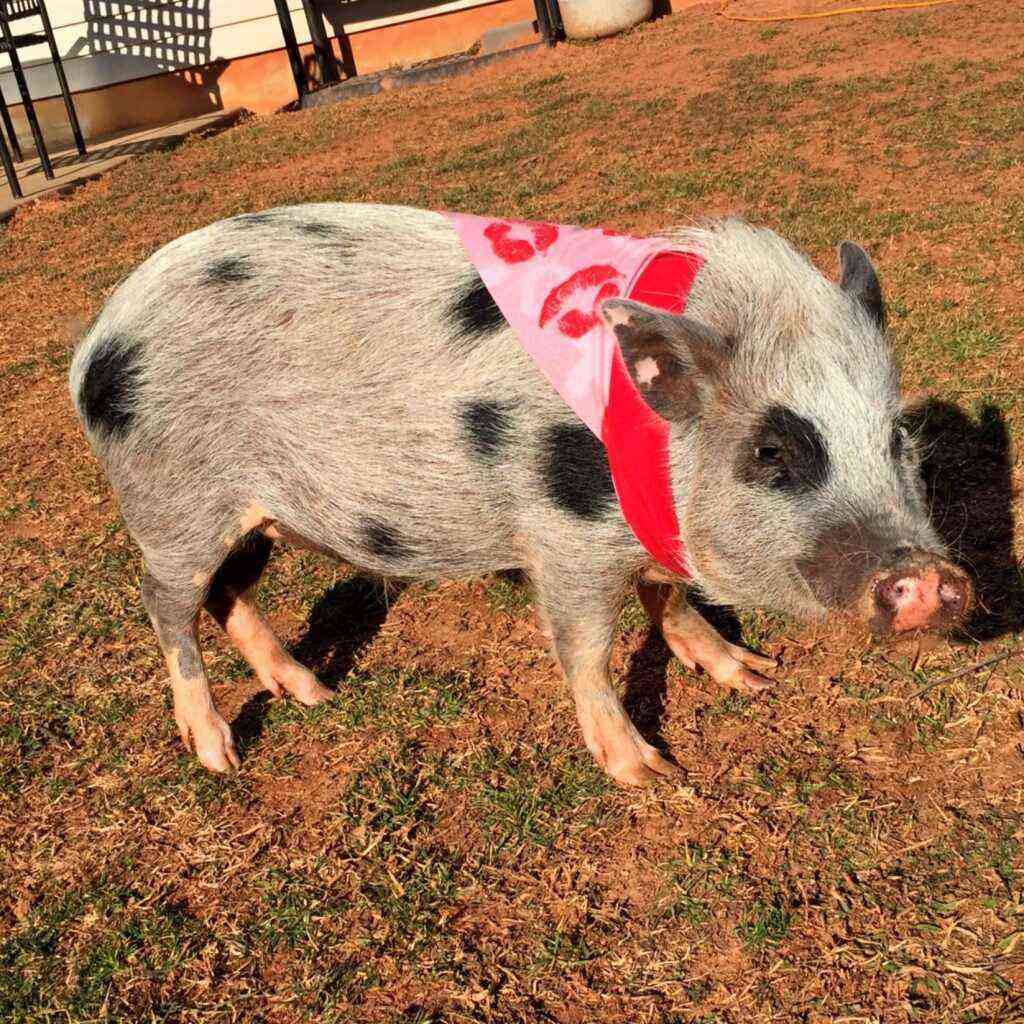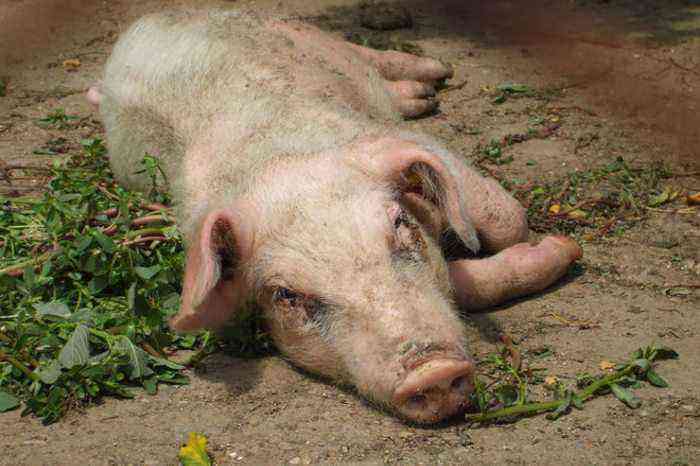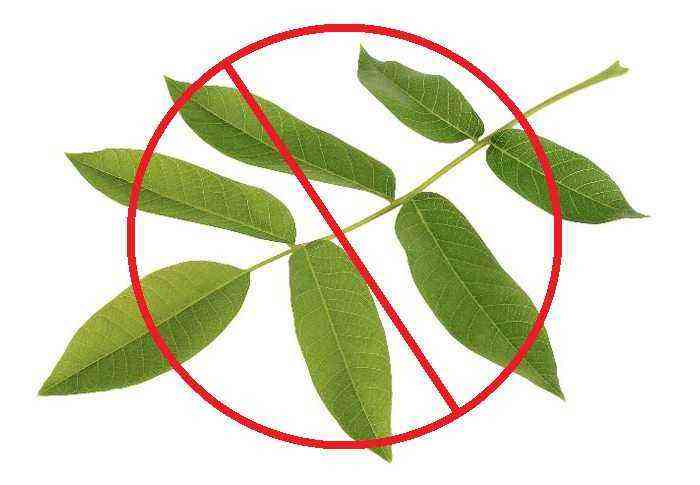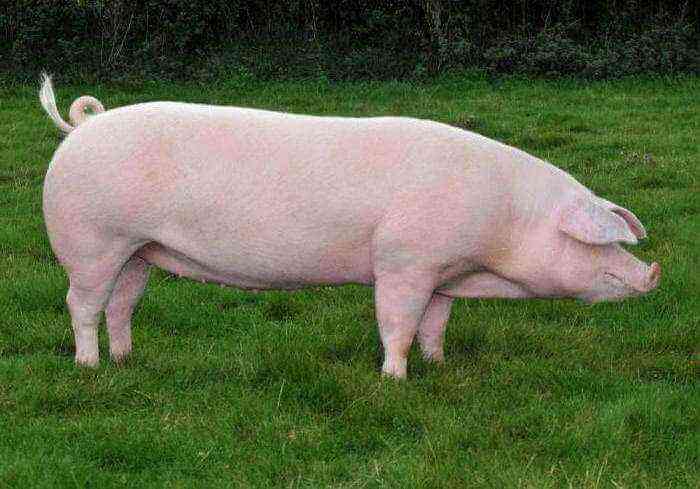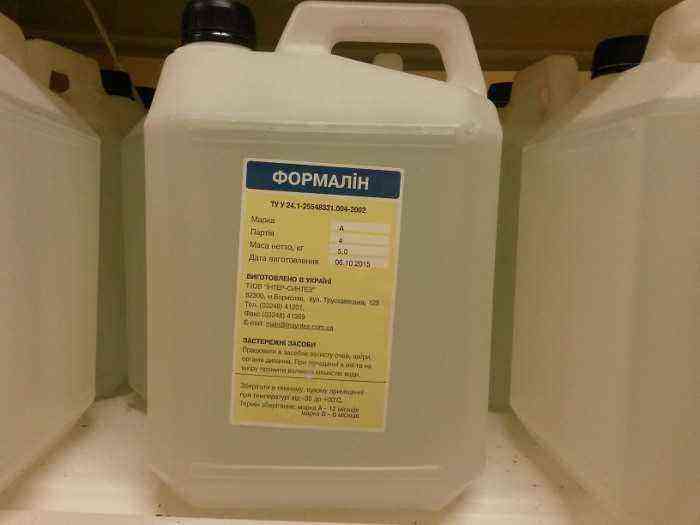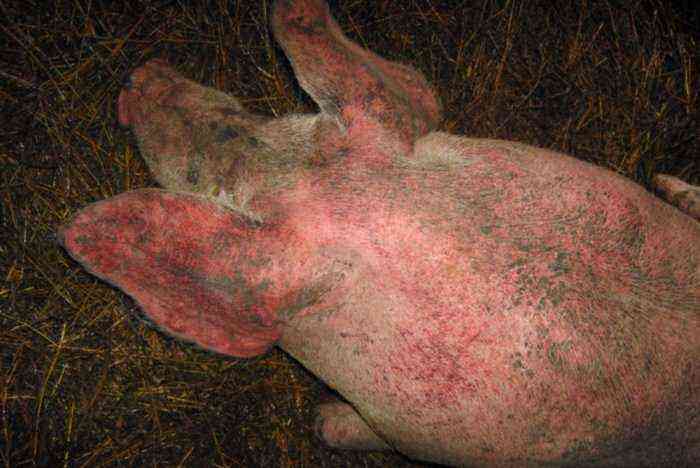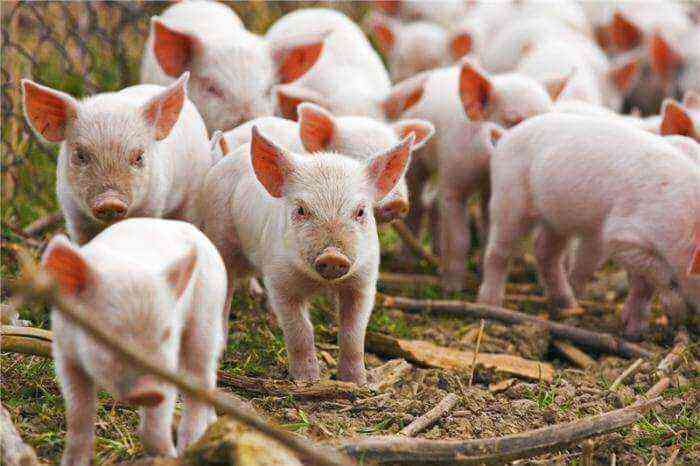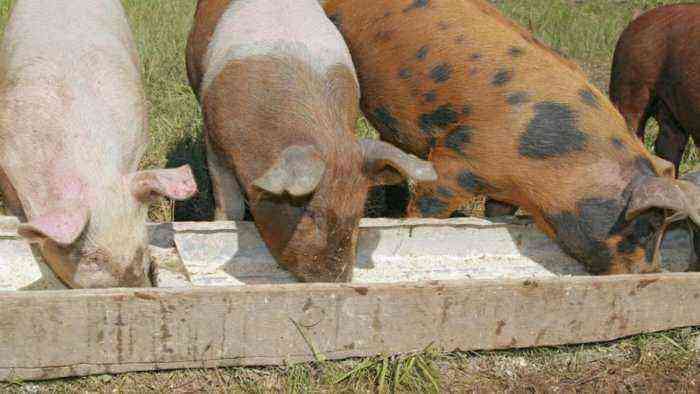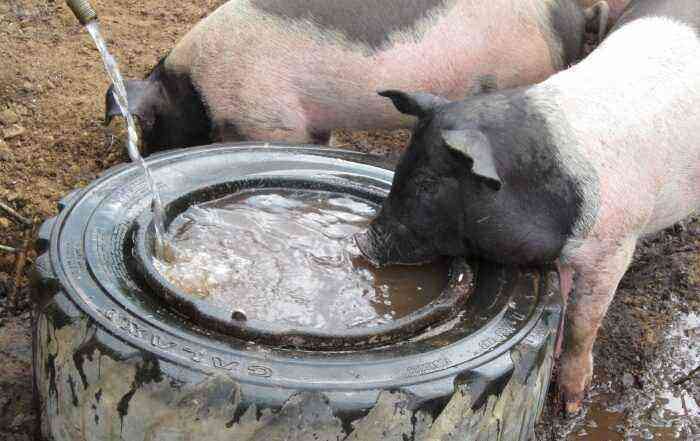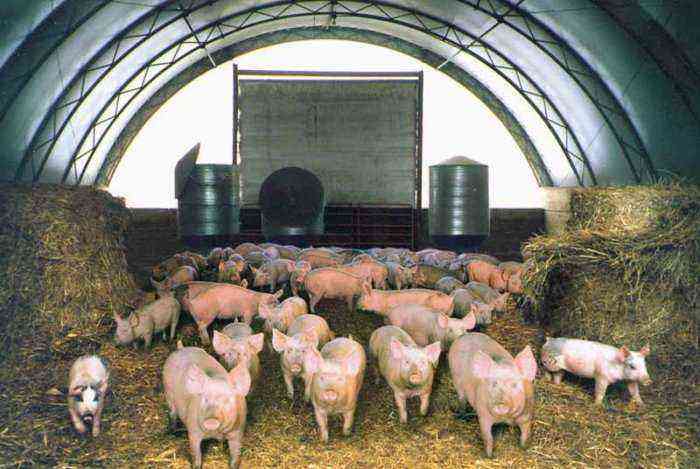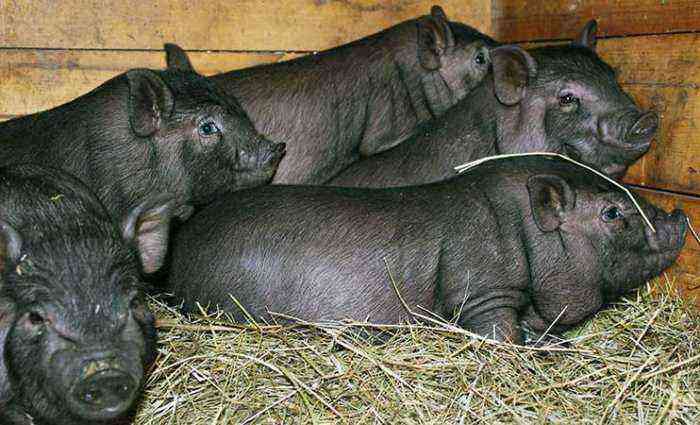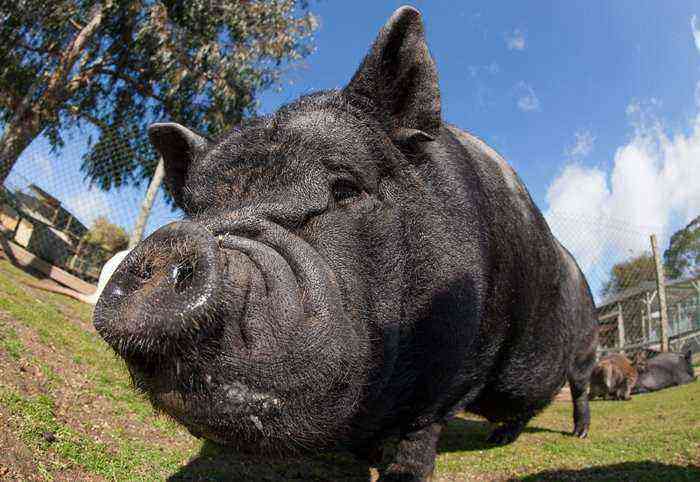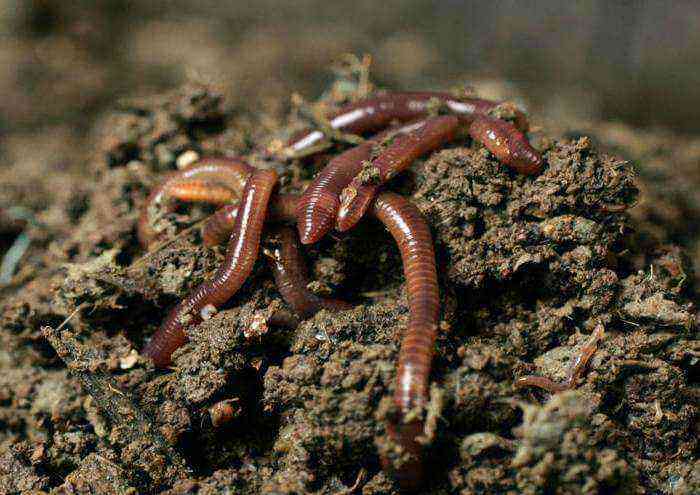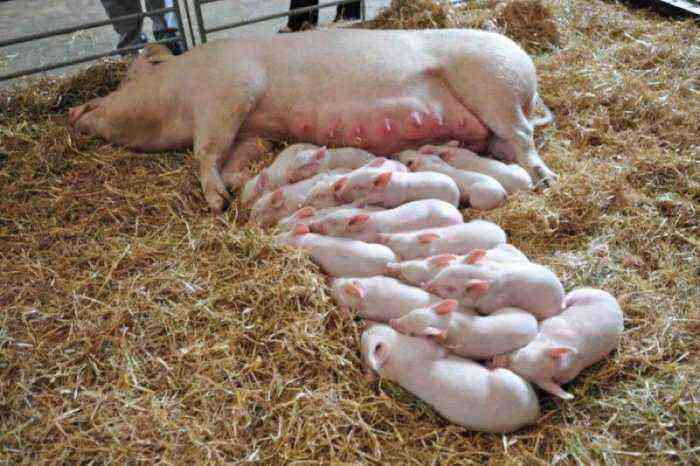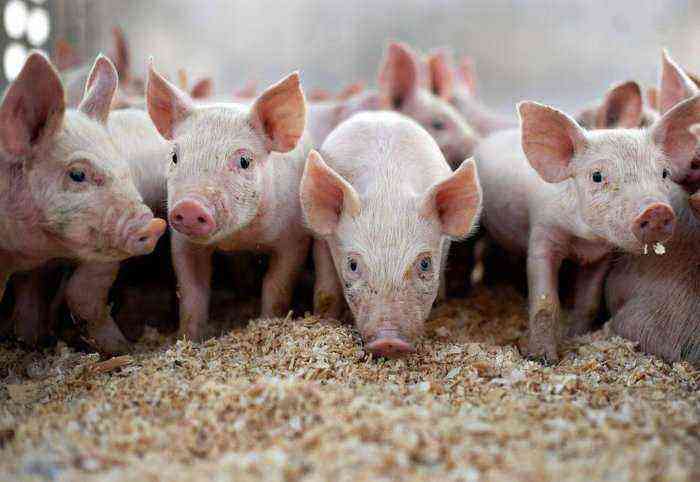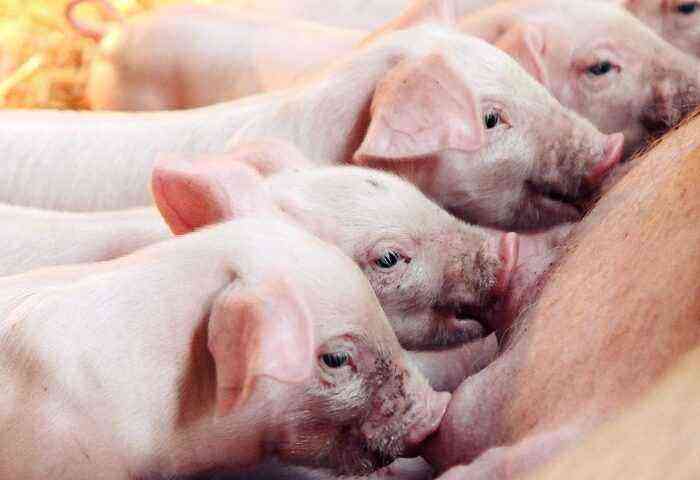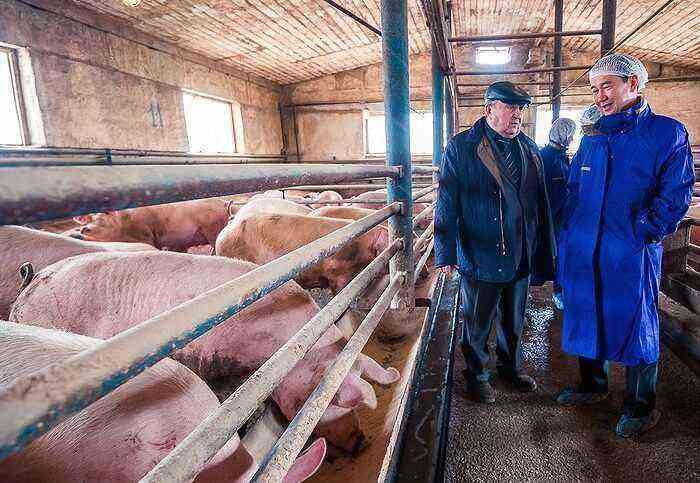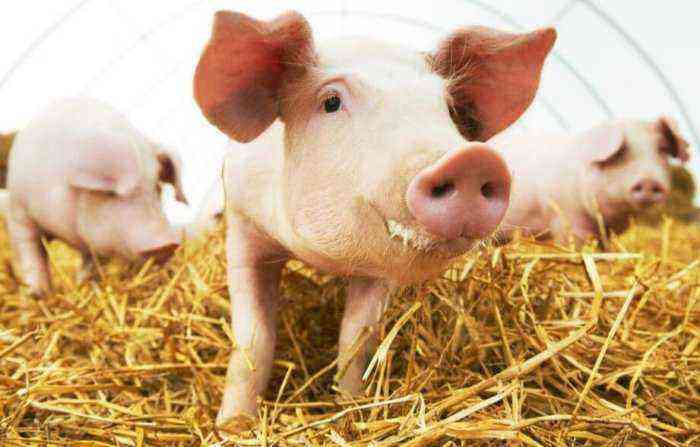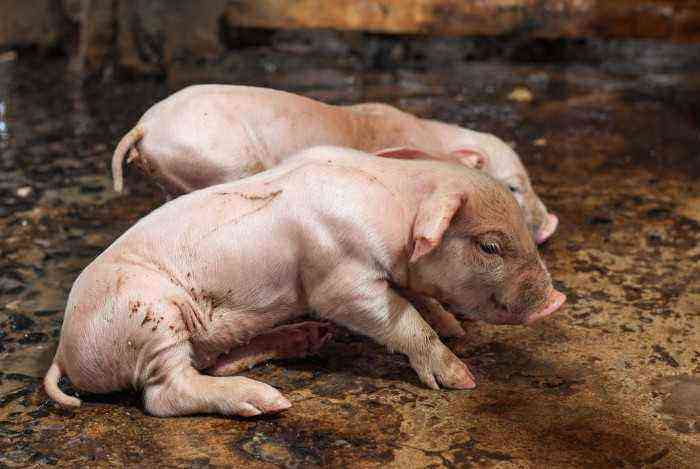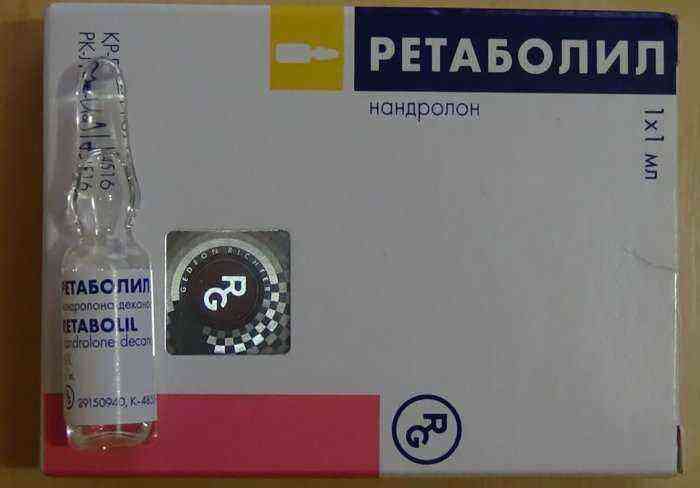Every farmer at least once in his life faced with such a disease as swine fever. This virus is dangerous only for pets, regardless of their age or breed. The animal becomes infected with it from already sick pigs, which can excrete the disease into the external environment in a large number of ways: feces, urine, secrets, and so on.
Plague infected pigs
What is classical swine fever?
Classical swine fever is a viral-type disease that occurs in this animal species. The disease manifests itself through fever or a deviation in the work of the hematopoietic organs or blood vessels. This type of plague occurs in any country in the world and in any pig breed. This virus harms not only the population or the animal itself, but also incredibly great damage to the country’s economy, since the death statistics are not comforting: from 80 to 100%.
You can also find the name European swine fever, which is classic, but called differently.
According to research, there are 3 types of virus varieties that cause an animal to develop a disease:
- A-variant – the development of an acute form.
- B-type – atypical and chronic swine fever.
- The C-variant is necessary in order to create a vaccine in the laboratory.

Creating a vaccine in the laboratory
The virus itself is very tenacious, and it can be destroyed by exposure to heat, the temperature of which varies from 70 to 80 degrees Celsius. In this case, the exposure itself should be carried out for at least 1 hour. The causative agents of the disease can be chemically removed with a 5% solution of Bional and other methods.
The disease is dangerous for any breed of pig, while the disease can be found even among species. The age of the animal does not play a role.
Is swine fever dangerous to humans?
The infection that causes the development of plague in pigs is not terrible for humans, as well as for other animals. That is, dogs, cows, kittens, etc. cannot be infected with swine distemper, this disease is transmitted only among pigs.
However, a person can become one of the main carriers of the infection, he will not develop the disease, but he will easily infect all the animals on his farm if he does not destroy the virus in time.
People should be afraid only because of the last reason, but not because they can die because of swine distemper.
Causes of appearance
There are many ways in which a pig can become infected with this disease. Most often, the infection gets already from an infected pig with the help of waste products. The virus enters the body of an animal with food or water, through wounds on the surface of the body and through the respiratory system, but there are other methods of infection. Let’s look at the main reasons why this transmission occurs:
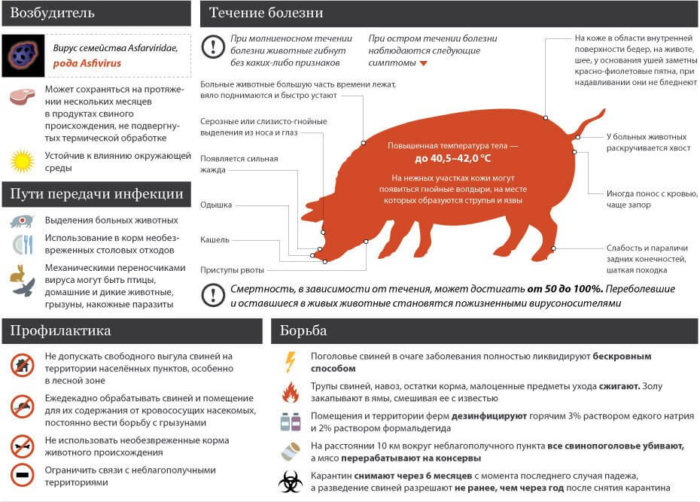
Useful information about the disease
- the farmer stores products that were made from animals that died from the distemper;
- transportation of pigs in a vehicle where sick animals were previously transported. Most of all, the chances increase if transportation is carried out in someone else’s car;
- food and water contaminated from sick people;
- the presence of carriers on the farm (people, pets, cats, dogs, rodents, etc.).
Symptoms
Unfortunately, this disease is not treatable even in its early stages, but with timely diagnosis, you can save other animals and reduce your losses.
So, the symptoms of distemper in pigs can be as follows:
- spots appear on the skin, often they are scarlet;
- constant vomiting;
- the animal’s body temperature rises.
Symptoms in acute form of the disease:
- severe fever at the beginning of the infection;
- diarrhea is constantly replaced by constipation;
- eyes and “piglet” are inflamed, pus appears;
- yellow pustules appear in the abdomen, ears and thighs;
- under the skin there are petechial hemorrhages.
For subacute type:
- sudden and rapid weight loss;
- pus is discharged from the nose and eyes;
- there is loose stool with a specific smell;
- pig starts coughing.
During chronic development:
- the animal loses weight;
- there is an increase in temperature;
- no appetite.
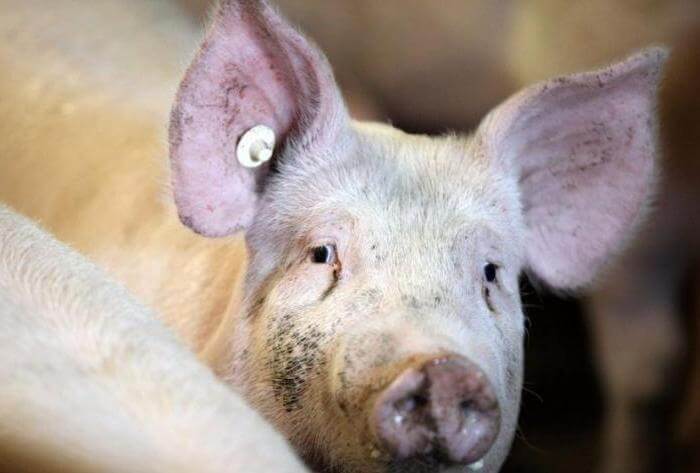
The pig has no appetite
Prevention and treatment of the virus
Unfortunately, there is currently no cure for the disease. Scientists have been trying to fight the disease for a long time and are trying to find an effective method of therapy, but so far the research has not yielded any results, despite all the existing progress in the field of medicine and science.
Infected animals are slaughtered, and their corpses are subjected to incrimination, after which the entire territory is subjected to the most powerful prevention and disinfection. But there are some effective ways to help prevent the development of the plague and the spread of this deadly infection further.
What other preventive measures are there?
- for new individuals it is always necessary to strictly monitor and control them, they are settled in the general herd after 2 weeks;
- all devices that are needed for working on the farm, including clothing, must be subject to systematic disinfection measures;
- do not allow alien animals, including cats and dogs, to enter the farm, exterminate rodents, etc.;
- any food and liquid must go through a disinfection process.
Reference. The territory where a case of infection with swine distemper was detected is immediately quarantined, which will last 40 days from the date of the last slaughter of infected animals.
Vaccination
The most effective and efficient way to prevent the disease is through a vaccine that helps protect against classic distemper. There are four types of vaccine on the market today. Vaccination needs to be organized only once a year, but it is not always effective, for example, if the animal has been in contact with the carrier already at the end of the year before vaccination.
Conclusion
As a result, the decisive factor for answering the question: “Is it worth it to vaccinate your livestock?” is a dry statistic. At the moment, the vaccine is not that expensive, but you will experience a much greater financial loss if swine is infected with distemper. Even if the percentage of disease in your area is minimal, there is always a chance of losing your livestock due to an incurable disease for them that could have been avoided.

